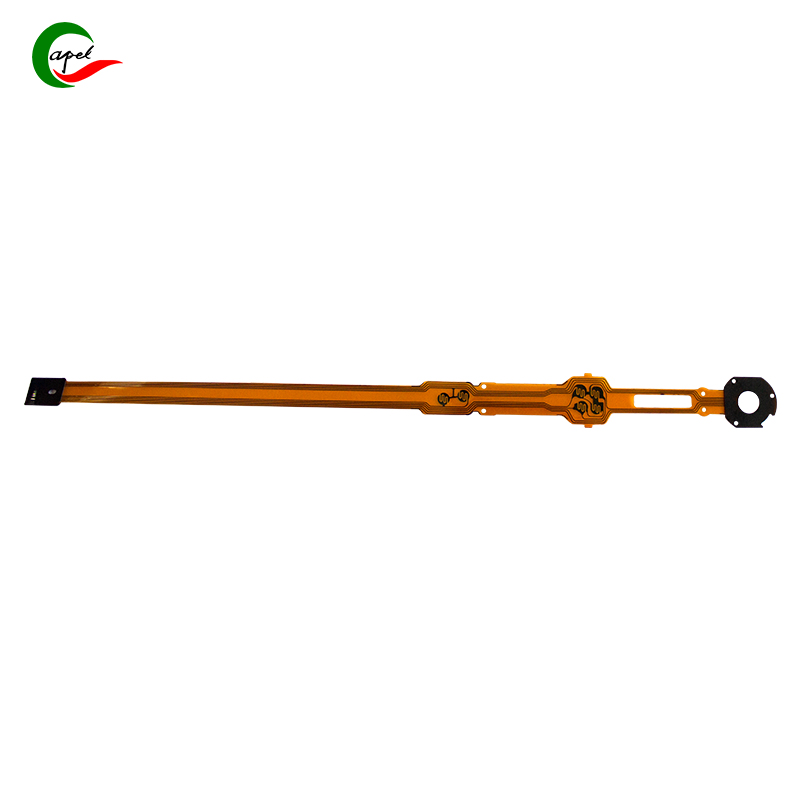Pick up your smartphone, AirPods, or smartwatch—and you’re holding a device powered by FPCs (Flexible Printed Circuits). Ten years ago, these gadgets relied mostly on rigid PCBs, but today, 80% of mid-to-high-end consumer electronics use FPCs. Why? Because consumer tech keeps getting smaller, thinner, and more flexible—and rigid PCBs can’t keep up.
Consumer electronics makers don’t just "prefer" FPCs—they need them to turn bold designs (like foldable phones or tiny earbuds) into reality. FPCs solve the biggest headaches of modern consumer tech: tight spaces, bending needs, and lightweight demands. Let’s break down the 4 core advantages that make FPCs the go-to choice for brands like Apple, Samsung, and Xiaomi.
Consumer electronics are shrinking fast: smart earbuds are now the size of a marble, and smartwatches need to fit snugly on wrists. Rigid PCBs are fixed, bulky, and can’t bend around batteries, sensors, or screens—they waste precious space.
FPCs, by contrast, are thin (as little as 0.05mm) and flexible—they can twist, fold, and snake through the tiniest gaps. For example:
- Apple’s AirPods Pro use FPCs to connect the battery, speaker, and microchip—there’s no room for a rigid PCB in the 1.5cm-wide earbud.
- Fitbit’s smallest fitness tracker uses a single FPC that wraps around the battery; a rigid PCB would make the tracker 3x thicker.
A study by the Consumer Technology Association found that FPCs reduce a device’s internal space usage by 40% compared to rigid PCBs. For consumer tech, where "slimmer = more desirable," this is a game-changer.
Foldable phones (like Samsung’s Galaxy Z Flip) and wearable tech (like Apple Watch) need circuits that bend—something rigid PCBs can’t do (they crack after a few hundred bends). FPCs are built for this: their polyimide substrate can bend 200,000+ times without breaking.
Here’s how brands use this advantage:
- Samsung’s foldable phones rely on FPCs in the screen hinge—these FPCs fold 180° every time the phone opens, and they last 5+ years of daily use.
- Garmin’s sports watches use FPCs that flex with the wrist; rigid PCBs would crack when the user runs or exercises.
Before FPCs, foldable phones were a novelty. Now, they’re a $20 billion market—all because FPCs made flexible designs reliable.

Consumer electronics need to be lightweight: no one wants to carry a heavy phone or a bulky smartwatch. Rigid PCBs are made of thick FR4 material, which adds unnecessary weight. FPCs are 50-70% lighter than rigid PCBs of the same size.
Examples of this in action:
- Xiaomi’s wireless earbuds use FPCs instead of rigid PCBs—each earbud weighs just 4.5g (vs. 6g with a rigid PCB).
- Lenovo’s 2-in-1 laptops use FPCs in the keyboard connection; this cuts the laptop’s weight by 100g—enough to make it feel significantly lighter.
Weight might seem like a small detail, but in consumer tech, it’s a key selling point. A 2023 survey by Statista found that 65% of smartphone buyers prioritize "lightweight design"—and FPCs help brands deliver that.
Consumer electronics are made in massive quantities (Apple sells 200 million iPhones yearly). FPCs are cheaper to produce at scale than rigid PCBs—here’s why:
- FPCs use less material: a rigid PCB needs a thick FR4 base, while an FPC uses a thin polyimide film.
- FPCs are easier to mass-produce: laser cutting machines can make 10,000 FPCs in a day, vs. 5,000 rigid PCBs (which need more complex drilling).
A cost analysis by a major electronics manufacturer found that FPCs cost 20-30% less per unit than rigid PCBs when producing 1 million+ devices. For brands competing in the low-margin consumer tech market (like budget smartphones), this savings adds up to millions of dollars.
Consumer electronics keep evolving: they’ll get smaller, more flexible, and more portable. Rigid PCBs can’t keep pace—but FPCs can. Their ability to fit in tiny spaces, bend for flexible designs, cut weight, and save costs makes them irreplaceable for modern consumer tech.
Next time you use your foldable phone, wireless earbuds, or smartwatch, remember: the technology that makes these gadgets work (and feel great to use) is the humble FPC. It’s not the flashiest part of the device, but it’s the reason consumer tech can keep pushing the boundaries of what’s possible. For consumer electronics makers, choosing FPCs isn’t just a preference—it’s a necessity to stay competitive.
Founded in 2009, our company has deep roots in the production of various circuit boards. We are dedicated to laying a solid electronic foundation and providing key support for the development of diverse industries.
Whether you are engaged in electronic manufacturing, smart device R&D, or any other field with circuit board needs, feel free to reach out to us via email at sales06@kbefpc.com. We look forward to addressing your inquiries, customizing solutions, and sincerely invite partners from all sectors to consult and collaborate, exploring new possibilities in the industry together.